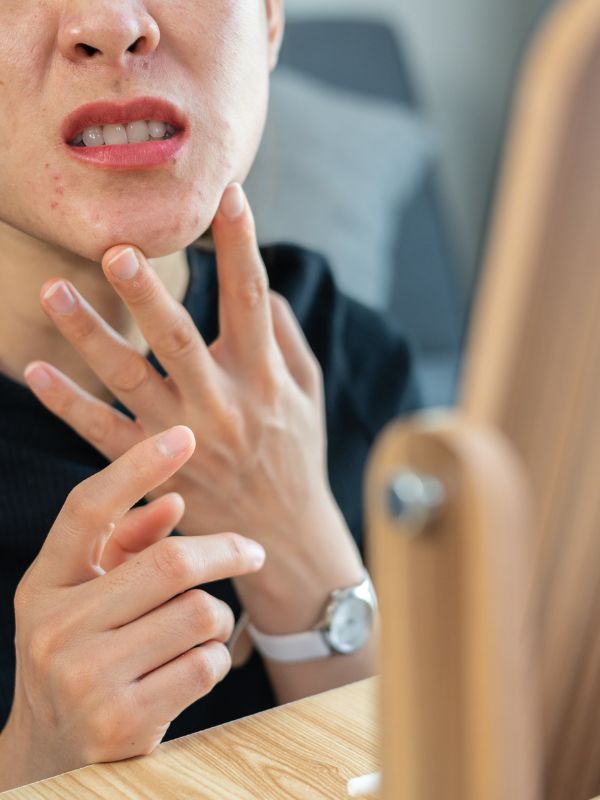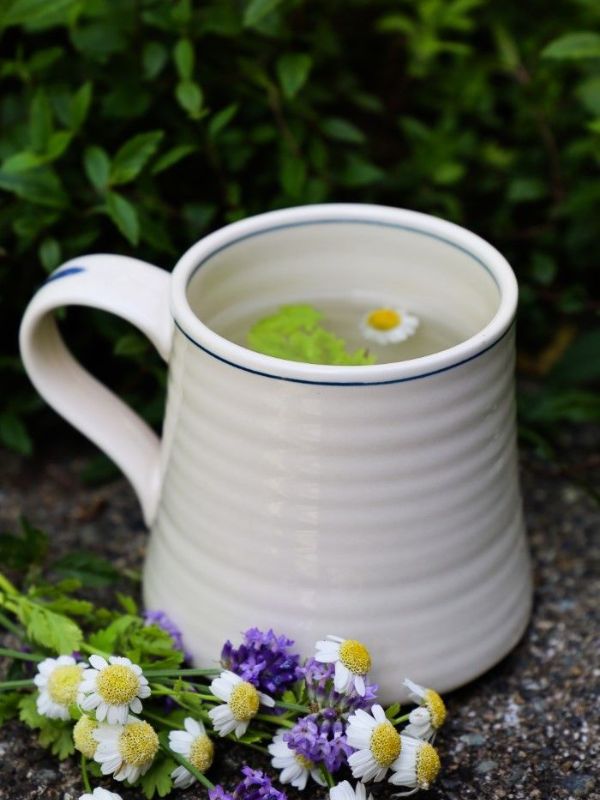Are frequent headaches and migraines disrupting your life? If you’re tired of relying on painkillers, feverfew might be the natural solution you’ve been looking for!
Feverfew (Tanacetum parthenium) is a powerful medicinal herb that has been used for centuries to reduce inflammation, relieve pain, and even support mental well-being.
It’s packed with parthenolide, a bioactive compound that helps prevent migraines, ease joint pain, and improve circulation.
#1. Reduces Migraine Frequency and Severity
Feverfew contains parthenolide, a compound that prevents blood vessels from dilating too much, reducing the intensity and frequency of migraines.
A study published in The Journal of Neurology, Neurosurgery & Psychiatry found that participants who took feverfew extract for four months experienced 24% fewer migraines.
It also helps reduce nausea and light sensitivity, common migraine symptoms.

#2. Eases Joint Pain and Arthritis Symptoms
Feverfew reduces inflammation by inhibiting prostaglandins, compounds that trigger pain and swelling.
Research in Phytomedicine suggests that feverfew may be as effective as NSAIDs (like ibuprofen) for reducing joint pain and stiffness.
It’s often used for rheumatoid arthritis, osteoarthritis, and other inflammatory conditions. Drinking feverfew tea or applying it as an infused oil may help ease joint discomfort over time.
#3. Supports Mental Well-Being and Reduces Stress
Feeling overwhelmed and anxious? Feverfew isn’t just for physical pain it also supports mental wellness. Research suggests that feverfew helps regulate serotonin, a neurotransmitter that affects mood and stress levels.
A study in The Journal of Alternative and Complementary Medicine found that feverfew may help reduce anxiety symptoms and promote relaxation.
It also contains antioxidants that protect the brain from oxidative stress, which may help prevent cognitive decline. Taking feverfew tea before bedtime may help you unwind and improve sleep quality.

#4. Reduces Menstrual Cramps and PMS Symptoms
If period pain keeps you down every month, feverfew might help. Its anti-inflammatory effects help relax uterine muscles and reduce menstrual cramping.
A study in The Journal of Women’s Health found that feverfew reduced pain intensity in women with severe menstrual cramps.
It may also help regulate hormonal fluctuations, reducing mood swings and bloating. Drinking feverfew-infused tea or taking supplements can help make that time of the month a little easier.
#5. Fights Inflammation and Boosts Immunity
Feverfew contains flavonoids and sesquiterpene lactones, which help boost immune response and reduce inflammatory markers.
Research in Molecular Medicine Reports found that feverfew’s compounds may help fight bacterial and viral infections.

#6. Helps Lower Blood Pressure and Improves Circulation
If your blood pressure tends to creep up, feverfew may help keep it in check. It relaxes blood vessels and improves circulation, reducing strain on the heart.
A study in The Journal of Cardiovascular Pharmacology found that feverfew extract helped lower blood pressure and improve heart function.
Drinking feverfew tea a few times a week may help support heart health naturally.
#7. May Help Reduce Allergies and Skin Irritation
Got itchy, irritated skin? Feverfew’s anti-inflammatory and antihistamine effects may help. Therefore, it helps reduce histamine reactions, making it useful for seasonal allergies, hives, and eczema.
When applied topically, it soothes redness, irritation, and sunburns. Using feverfew-infused oil or making a herbal face rinse can calm inflamed skin naturally.

How to Use Feverfew for Maximum Benefits
1. Feverfew Tea (For Headaches, Stress, and Digestion)
Ingredients:
- 1 teaspoon dried feverfew leaves
- 1 cup boiling water
- Honey or lemon (optional)
Instructions:
- First, add feverfew leaves to a cup.
- Next, pour boiling water over them and let steep for 10–15 minutes.
- Strain and add honey or lemon for taste.
- Drink once daily for best results.
2. Feverfew Tincture (For Migraines and Pain Relief)
For migraines and pain relief, take 1–2 dropperfuls of feverfew tincture in a glass of water or juice. You can use this once or twice daily as needed.
3. Feverfew Capsules (For Long-Term Use)
For long-term use, take 250–500 mg of feverfew extract per day. Note that the best results typically come after 3–4 weeks of consistent use.
4. Feverfew Infused Oil (For Joint Pain and Skin Care)
or joint pain and skin care, apply a few drops of feverfew infused oil to sore muscles, joints, or irritated skin. Then, massage gently until the oil is absorbed.

Cautions and Precautions
Pregnant and breastfeeding women should avoid feverfew, as it may cause uterine contractions. People taking blood thinners should consult a doctor, as feverfew may enhance blood clotting effects.
Some individuals may experience mild mouth irritation when chewing raw feverfew leaves. If you’re new to feverfew, start with a small dose and monitor your body’s response.
Disclaimer
This article is for informational purposes only and does not replace medical advice. If you have existing health conditions or take medications, consult a healthcare provider before using feverfew as a remedy.

Feverfew: The Natural Painkiller That Works Wonders for Migraines and More
